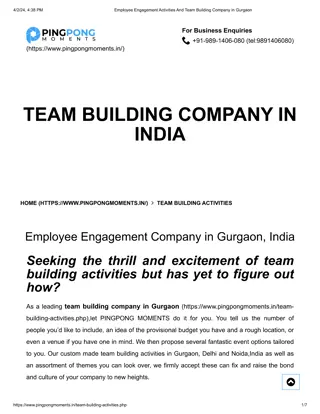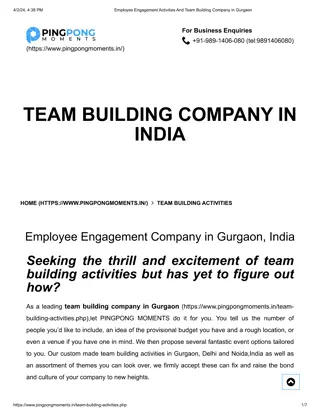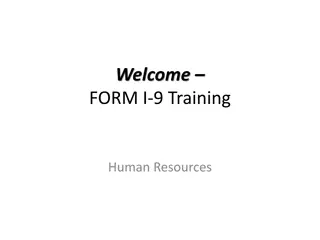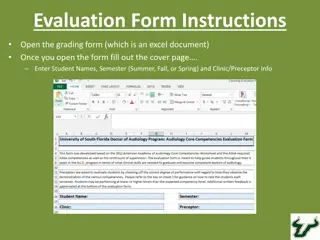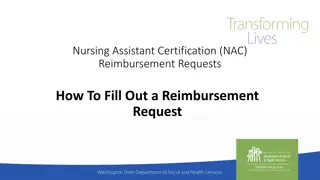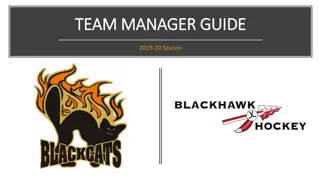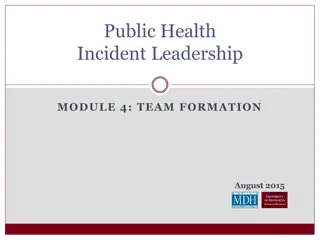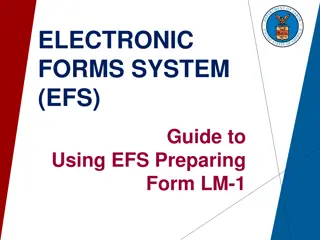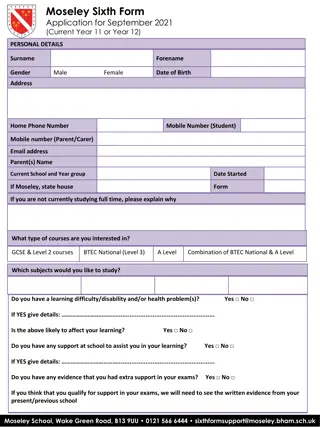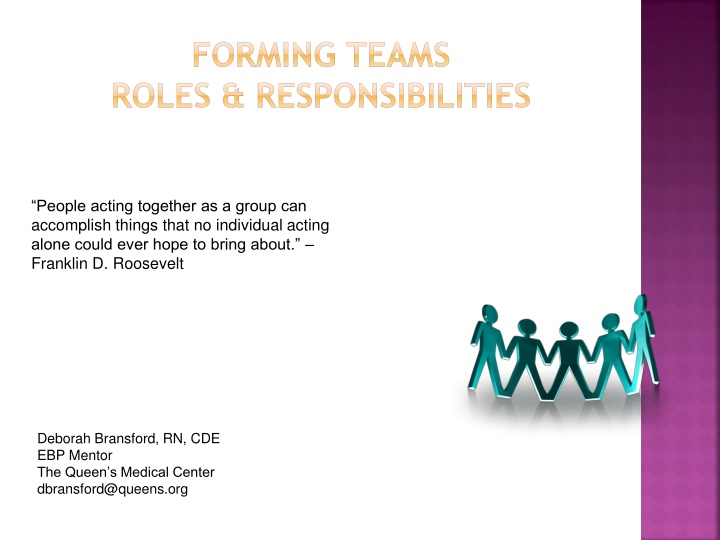
Effective Team Formation and Leadership Strategies in Healthcare Settings
Explore the significance of forming teams, defining roles, and distributing responsibilities in healthcare settings. Understand the benefits, tips for selecting team members, stages of team development, and the pivotal role of a team leader or project director in fostering collaboration and achieving common goals.
Download Presentation

Please find below an Image/Link to download the presentation.
The content on the website is provided AS IS for your information and personal use only. It may not be sold, licensed, or shared on other websites without obtaining consent from the author. If you encounter any issues during the download, it is possible that the publisher has removed the file from their server.
You are allowed to download the files provided on this website for personal or commercial use, subject to the condition that they are used lawfully. All files are the property of their respective owners.
The content on the website is provided AS IS for your information and personal use only. It may not be sold, licensed, or shared on other websites without obtaining consent from the author.
E N D
Presentation Transcript
FORMING TEAMS ROLES & RESPONSIBILITIES People acting together as a group can accomplish things that no individual acting alone could ever hope to bring about. Franklin D. Roosevelt Deborah Bransford, RN, CDE EBP Mentor The Queen s Medical Center dbransford@queens.org
WHAT IS A TEAM? Group of people with complementary skills who interact to achieve a common objective Group of people committed to a common purpose and common performance goals and outcomes, for which they hold themselves collectively responsible.
Together Everyone Achieves More Coming together is a beginning. Keeping together is progress. Working together is success. --Henry Ford
BENEFITS OF A TEAM Broader knowledge base Greater creativity and perspective Builds buy-in Shared workload Better problem-solving More stimulating and motivating environment for work
TEAM MEMBERSHIP Opinion leader(s) Unit change champions APRN clinical expert Core group Nurse Manager Physician colleagues Users of the EBP Colleagues from other disciplines
TIPS FOR SELECTING MEMBERS Complementary mix of skills and problem solving abilities Decision making skills Some with team experience At least one member who is good with Excel May want to appoint a scribe or rotate scribes Choose for attitude, train for skills
TEAM FORMATION Obtain leadership approval for team goals Keep team to 5-7 members if possible Have rules made by consensus, including attendance expectations Establish share drive for info sharing if possible Be clear about contributions
TEAM STAGES Forming Storming Norming Performing
TEAM LEADER OR PROJECT DIRECTOR Works best if someone is designated as leader or facilitator Understands whole project and oversees process Keeps team on track, timelines, schedules Supports and guides members in achieving goals Fosters productive work relationships
OPINION LEADER Respected and influential among peers Trusted to evaluate new information Technically competent Dedicated member of group Believes in the idea passionate about topic
CHANGE CHAMPION(S) Informal leaders Expert clinicians Positive working relationship Committed to quality care Passionate about project Persistent!
MENTOR Cheerleader May help with most difficult steps Identify potential roadblocks and pitfalls in advance Provide expertise as needed
NURSE MANAGER Sets expectations on unit Discuss project with staff, other disciplines Cheerleader for project to greater audience in organization Track progress
STAFF NURSE CORE GROUP Educate colleagues Trouble-shoot application in day-to- day care Role model Report challenges
TEAM ROLES SAMPLE CHART EBP TEAM Roles and Responsibilities PI Coordinator Leaders Change Champions Opinion Ad Hoc Members Team Leader Mentor Director Deborah Bransford, _________ __________ _________ ________ ________ _________ Keep respective units informed of project through various avenues: -staff mtgs -unit councils -one to one Prepare agendas for mtgs Request for agenda items 2 wks prior Send out agenda & reminders 1 wk prior Assist with critiquing skills and literature synthesis Enter/maintain info in articles critique matrix Keep team on track of Iowa model Supports project and staff involvement ________ Mentor and assist team leader with leadership skills and tracking progress Cheerleaders and enthusiasts for the units Ensuring project is EBP, not PI or research Supports project and staff involvement Maintain/Update Action Plan Facilitate mtgs ________ Updating group of any concerns from their respective units that may impact project Assigning tasks and updating group of project progress Support with Organizational communication Advocate of project to admin group Liaison for ad hoc members Cheerleader! ________ All Members will rotate to assist with taking minutes and being time keepers. Minutes to be completed within 1 week of meeting.
PROJECT INTEGRATION TEAM Who will help you with implementation on the front lines ? Nurse educators orientation, on-going competency Unit managers Quality coordinators Physician colleagues
STAKEHOLDER ANALYSIS (APPENDIX F) Determine impact on dissemination and adoption Matrix: Support Influence Strategies for participation Titler, M.G. (2002). Selection of a Topic for EBP: Appendix F/Figure 3. In Toolkit for Promoting Evidence-Based Practice. Iowa City, IA: RQ&OM, Department of Nursing Services and Patient Care, University of Iowa Hospitals and Clinics.
STAKE HOLDER ANALYSIS Stakeholder influence (high to low) Stakeholder support (high to low) Strategies for each combination High influence/high support (e.g. nurse manager support of EBP topic) Low influence/high support (e.g. staff nurse enthusiastic of EBP topic) High influence/low support (e.g. nurse manager not supportive of the EBP topic or EBP in general) Low influence/low support (e.g. staff nurse who is not enthusiastic of the EBP topic; why do we need to change practice )
TIPS FOR TEAM SUCCESS Have a team charter or written plan with timeline and deadlines Write down the goals and review/revise periodically Stay focused on the goal Keep leadership informed of progress Have measurable outcomes Regard problems as opportunities for team learning
TIPS FOR TEAM SUCCESS Communicate progress of team with unit staff Keep good records of progress Start and stop on time Simple is usually better Have fun and enjoy learning!


